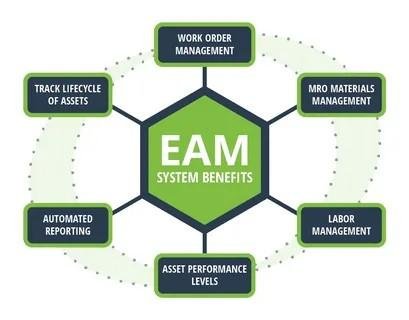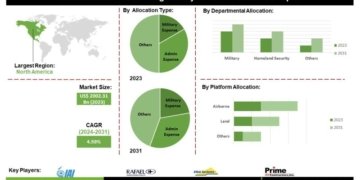The global enterprise asset management (EAM) market is projected for substantial expansion, with its value estimated to reach USD 9,279.09 million by 2034. Growing at a moderate yet consistent compound annual growth rate (CAGR) of 7% during the forecast period, the market is set to nearly double from its current valuation of USD 4,717.07 million in 2024. This significant growth is primarily driven by the increasing integration of cutting-edge technologies like the Internet of Things (IoT) and Artificial Intelligence (AI), which are revolutionizing how organizations manage their critical assets for enhanced efficiency and longevity.
Technological Advancements and Strategic Shifts Drive Market Momentum
The EAM market’s trajectory is strongly influenced by key technological trends. The burgeoning deployment of IoT in various industries has drastically improved the tracking mechanisms for enterprise assets. Integrating IoT technology with EAM solutions allows for real-time identification of performance insights and control modifications, leading to a more optimistic market outlook. Furthermore, the growth of Artificial Intelligence (AI) and drone-based enterprise solutions represents an emerging trend. AI notably enhances data handling, enabling better decision-making through advanced asset intelligence services.
Thorough Market Evaluation: Full Report
https://www.futuremarketinsights.com/reports/global-enterprise-asset-management-market
Historically, the global EAM market was valued at USD 3,809.31 million in 2019, growing at a CAGR of approximately 4.1% to reach USD 4,466.25 million by 2023. While the COVID-19 pandemic presented challenges in 2020 and 2021, market participants leveraged this period to restructure strategies and refine their product portfolios, laying the groundwork for the accelerated growth now being observed.
Pivotal Factors Fueling EAM Market Growth
The integration of IoT with EAM software is anticipated to play a crucial role in the development of smart cities, which continuously monitor the conditions of critical infrastructure. Increased data analysis accuracy, improved decision-making capabilities, and enhanced outcomes from asset management software are major factors driving the demand for EAM across numerous economies. Additionally, the widespread adoption of work-from-home models across various sectors has led to a surge in demand for cloud-based EAM solutions. As businesses increasingly invest in their IT infrastructure over physical infrastructure, the need for robust EAM solutions is expected to continue its upward trajectory, protecting employees and ensuring efficiency and productivity.
Country-Wise Insights: Pockets of High Growth
Globally, several countries are poised to offer lucrative growth opportunities for enterprise asset management solution providers over the next decade. Australia leads the pack with an anticipated CAGR of 10.5% between 2024 and 2034, driven by technological advancements in IT, manufacturing, and industrial sectors, alongside a growing demand for cloud services for business applications. Japan is set to observe an 8.2% CAGR, fueled by a strong focus on asset lifecycle management and the presence of both large EAM firms and developing start-ups. China holds attractive growth potential with a 7.5% CAGR, largely due to its thriving manufacturing sector’s focus on resource utilization, condition monitoring, and effective supply chain management.
In Germany, the EAM industry is expected to expand at a rate of 6.5% annually, propelled by enterprises’ increased attention to regulatory and compliance standards, significant investments in research and development, and a higher penetration of EAM preventive maintenance systems. The United States market is projected to witness a steady 3.9% year-on-year growth, benefiting from its well-developed information technology infrastructure, increasing implementation of cloud-based solutions, and a growing quantity of data necessitating EAM integration among large enterprises.
Category-Wise Analysis: Solution Preferences and Enterprise Adoption
By solution type, Enterprise Asset Management solutions contribute more than half of the global demand, accounting for approximately 54% of the revenue share in 2024. Companies prioritize on-premises EAM deployments due to concerns over personal data security, preferring greater control over consumer and company information.
In terms of enterprise size, large enterprises (with 500 to 999 employees) generate the most demand for the asset lifecycle management market, expected to account for 35.41% of the market revenue in 2024. Their significant adoption and penetration of EAM solutions are creating substantial business opportunities for asset reliability management market players.
The Information Technology (IT) & telecom companies are the leading end-users of EAM systems, contributing an estimated 21.6% of the market’s revenue share in 2024. High digitization initiatives in service-based enterprises and advancements in technology like smart objects and SaaS-based applications have resulted in considerable growth in this sector, moving organizations beyond traditional maintenance approaches.
Competitive Landscape and Recent Innovations
The enterprise asset management market is intensely competitive, with key EAM software developers striving to offer solutions that go beyond traditional asset management. The latest industry trend involves EAM software solutions that provide comprehensive access to organizational asset information across departments and locations, incorporating insights into energy usage, lifecycle costs, maintenance histories, warranty catalogs, purchase orders, and audit records.
Leading players are heavily investing in research and development and product innovation to broaden the use cases of EAM systems. Recent strategic developments include SAP’s acquisition of AppGyver in February 2021, a pioneer in no-code development, aimed at helping clients and partners quickly modify their IT solutions. In March 2023, OpenGov released its newest software suite, Cartegraph Asset Management, introducing potent new product features and connectors. Prominent companies in this market include Oracle Corporation, SAP SE, Schneider Electric SE, ABB Ltd., MRI Software LLC, CGI Inc., Industrial and Financial Services (IFS) AB, Infor Inc., Ramco Systems Limited, Rockwell Automation Inc., and Bentley Systems Incorporated, among others. These players are focused on integrating advanced technologies and expanding their offerings to meet the evolving demands of a rapidly digitizing global economy.
Get Ahead with Our Report: Request Your Sample Now!
https://www.futuremarketinsights.com/reports/sample/rep-gb-193
Uncover growth opportunities in our related research reports.
Enterprise Manufacturing Intelligence Market
https://www.futuremarketinsights.com/reports/enterprise-manufacturing-intelligence-market
Enterprise Video Market
https://www.futuremarketinsights.com/reports/enterprise-video-market
Enterprise Mobility Market
https://www.futuremarketinsights.com/reports/enterprise-mobility-market
Future Market Insights Inc.
Christiana Corporate, 200 Continental Drive,
Suite 401, Newark, Delaware – 19713, USA
T: +1-845-579-5705
For Sales Enquiries: sales@futuremarketinsights.com
Website: https://www.futuremarketinsights.com
Future Market Insights, Inc. (ESOMAR certified, recipient of the Stevie Award, and a member of the Greater New York Chamber of Commerce) offers profound insights into the driving factors that are boosting demand in the market. FMI stands as the leading global provider of market intelligence, advisory services, consulting, and events for the Packaging, Food and Beverage, Consumer Technology, Healthcare, Industrial, and Chemicals markets. With a vast team of 400 analysts worldwide, FMI provides global, regional, and local expertise on diverse domains and industry trends across more than 110 countries.
This release was published on openPR.


















